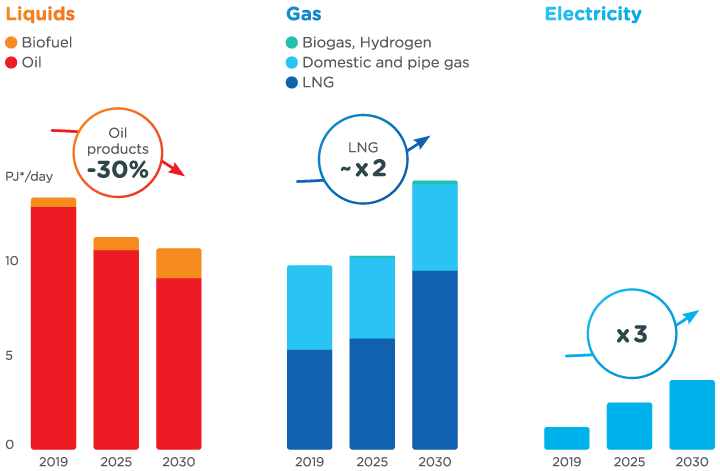
© Samuel Borges / EyeEm
TotalEnergies: building a sustainable multi-energy company
At the Investor Days on September 27 and 28, TotalEnergies reaffirmed its strategy as a multi-energy company, committed to the energy transition, and active in oil, natural gas, renewables & electricity, biomass and hydrogen, benefitting all its stakeholders.
More energy, fewer emissions
TotalEnergies reasserted its ambition to get to Net Zero by 2050 together with society. In addition, to accompany the Green Deal in Europe, TotalEnergies, a European company, has committed to reducing its Scope 1+2+3 emissions by 30% between 2015 and 2030.
Energy is reinventing itself and TotalEnergies is too, to provide more energy with fewer emissions, and always more sustainable.
To satisfy growing global energy demand linked to worldwide population growth, TotalEnergies will increase its energy production by 30% from now to 2030, with growth coming half from electricity, essentially from renewables, and half from liquefied natural gas (LNG). Its sales mix will evolve to 30% oil, 50% gas, 15% electricity and 5% biomass and hydrogen by 2030. Petroleum product sales will decrease by at least 30% over the period 2020-30.
Adapting our energy sales to demand

These diagrams show us TotalEnergies' objectives to adapt its energy sales (liquids, gas and electricity) to the demand.
Liquids
2019
Biofuel: approximately 0.5 petajoule per day
Oil: approximately 14 petajoule per day
2025
Biofuel: approximately 0.5 petajoule per day
Oil: approximately 10 petajoule per day
2030
Biofuel: approximately 1 petajoule per day
Oil: approximately 9 petajoule per day
Gas
2019
LNG: approximately 5 petajoule per day
Domestic and pipe gas: approximately 5 petajoule per day
2025
LNG: approximately 5.5 petajoule per day
Domestic and pipe gas: approximately 5 petajoule per day
Biogas, hydrogen: approximately 0.1 petajoule per day
2030
LNG: approximately 9 petajoule per day
Domestic and pipe gas: approximately 5 petajoule per day
Biogas, hydrogen: approximately 0.1 petajoule per day
Electricity
2019: approximately 1 petajoule per day
2025: approximately 3 petajoule per day
2030 : approximately 4 petajoule per day
* Petajoule: unit used to measure energy corresponding to one quadrillion (1015) joules.
(Unit derived from the International System of Units to quantify energy, work and the quantity of heat).
Energy sales:
+15% over the decade
Sales mix by 2030:
30% Oil
50% Gas
15% Electricity
5% Biomass, Hydrogen
Hydrocarbons will nonetheless continue to generate strong cash flow to fund the transition and return to shareholders.
Upstream production should grow by about 3% per year by 2026, driven by LNG which should grow by 6% per year. TotalEnergies’ oil production will reach its peak during the decade before declining.
In Downstream, TotalEnergies will continue its policy of adapting its industrial and marketing facilities to anticipate the decline in petroleum product demand, particularly in Europe. At the same time, TotalEnergies will seize development opportunities in polymers, including recycling and bioplastics, and in new markets, such as biofuels or electric mobility.
